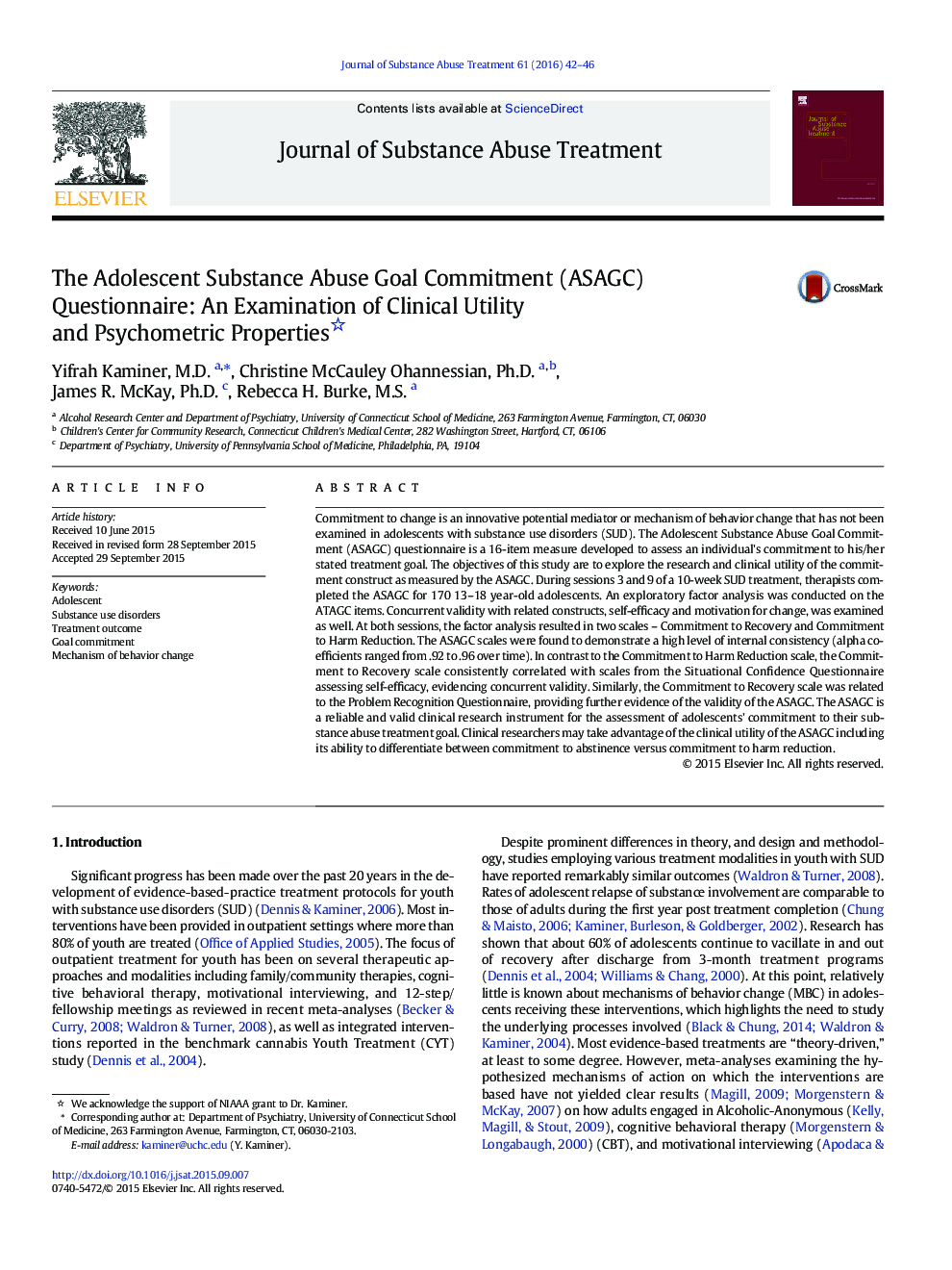| کد مقاله | کد نشریه | سال انتشار | مقاله انگلیسی | نسخه تمام متن |
|---|---|---|---|---|
| 329593 | 543558 | 2016 | 5 صفحه PDF | دانلود رایگان |
• The Adolescent Substance Abuse Goal Commitment (ASAGC) questionnaire was designed to investigate two clinical constructs commonly used in the adult literature, abstinence/sobriety and harm reduction.
• The ASAGC questionnaire shows promising clinical utility and psychometric properties.
• The findings question the clinical utility of the harm reduction construct for youth with substance use disorders as compared to adults.
Commitment to change is an innovative potential mediator or mechanism of behavior change that has not been examined in adolescents with substance use disorders (SUD). The Adolescent Substance Abuse Goal Commitment (ASAGC) questionnaire is a 16-item measure developed to assess an individual's commitment to his/her stated treatment goal. The objectives of this study are to explore the research and clinical utility of the commitment construct as measured by the ASAGC. During sessions 3 and 9 of a 10-week SUD treatment, therapists completed the ASAGC for 170 13–18 year-old adolescents. An exploratory factor analysis was conducted on the ATAGC items. Concurrent validity with related constructs, self-efficacy and motivation for change, was examined as well. At both sessions, the factor analysis resulted in two scales – Commitment to Recovery and Commitment to Harm Reduction. The ASAGC scales were found to demonstrate a high level of internal consistency (alpha coefficients ranged from .92 to .96 over time). In contrast to the Commitment to Harm Reduction scale, the Commitment to Recovery scale consistently correlated with scales from the Situational Confidence Questionnaire assessing self-efficacy, evidencing concurrent validity. Similarly, the Commitment to Recovery scale was related to the Problem Recognition Questionnaire, providing further evidence of the validity of the ASAGC. The ASAGC is a reliable and valid clinical research instrument for the assessment of adolescents' commitment to their substance abuse treatment goal. Clinical researchers may take advantage of the clinical utility of the ASAGC including its ability to differentiate between commitment to abstinence versus commitment to harm reduction.
Journal: Journal of Substance Abuse Treatment - Volume 61, February 2016, Pages 42–46
